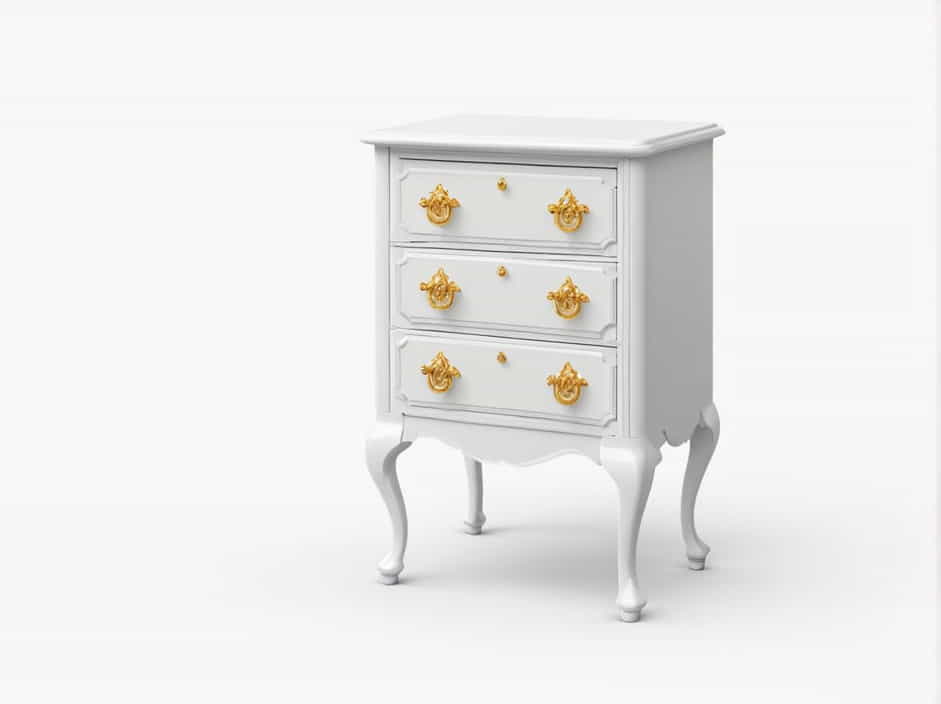The Queen Anne highboy is one of the most recognizable and beloved pieces of antique American furniture. With its graceful curves, elegant cabriole legs, and refined ornamentation, this tall chest of drawers has remained a symbol of sophistication and craftsmanship for centuries.
But what makes the Queen Anne highboy so familiar? Why has it endured as a staple in both historic and modern interiors? This topic explores the history, characteristics, and lasting appeal of the Queen Anne highboy, offering insights into its significance in American decorative arts.
The Origins of the Queen Anne Style
Influences from England
The Queen Anne style originated in early 18th-century England, during the reign of Queen Anne (1702-1714). While Queen Anne herself had little to do with furniture design, the style developed during her time reflected a shift toward elegance and comfort. It moved away from the heavier, more ornate designs of the Baroque period and introduced lighter, more refined shapes.
English cabinetmakers crafted pieces with graceful curves, delicate proportions, and minimal carving. These features later influenced American furniture makers, who adapted the style to fit the materials and tastes of the colonies.
Arrival in the American Colonies
The Queen Anne style reached America in the early 1700s, where it became one of the most popular furniture styles of the 18th century. Skilled cabinetmakers in Boston, Philadelphia, Newport, and other colonial cities embraced its elegant design, crafting high-quality pieces using locally available cherry, maple, walnut, and mahogany.
Among the many forms produced, the Queen Anne highboy stood out as a functional yet decorative masterpiece, becoming a centerpiece of wealthy American homes.
What Is a Queen Anne Highboy?
Definition and Purpose
A highboy (also called a high chest of drawers) is a tall, freestanding chest consisting of two sections:
-
A lower section, often with drawers and graceful cabriole legs
-
An upper section, featuring multiple drawers for storing clothing and linens
The Queen Anne highboy is distinguished by its elegant curves, fine craftsmanship, and balanced proportions, making it both a practical storage piece and a statement of refinement.
Key Characteristics
-
Cabriole Legs – The hallmark of Queen Anne furniture, these curved legs end in pad, trifid, or ball-and-claw feet.
-
Curved Apron – The lower section often features a scalloped or shell-carved apron, adding a decorative touch.
-
Graceful Proportions – Unlike earlier, bulkier styles, Queen Anne highboys are light and refined, with a sense of delicate balance.
-
Ornamental Finials – Many highboys are topped with carved finials, shells, or scrollwork, adding height and elegance.
-
Rich Wood Finishes – Made from mahogany, walnut, or cherry, the natural beauty of the wood was enhanced with a fine varnish or shellac finish.
The Highboy as a Symbol of Status
A Mark of Wealth and Refinement
Owning a Queen Anne highboy in 18th-century America was a sign of wealth and taste. These pieces were expensive to produce and required the skill of master cabinetmakers. Only the wealthiest families could afford such an elegant, handcrafted storage unit.
The highboy was often placed in the bedroom or dressing area, serving as both a functional wardrobe and a statement piece. Its height and ornate design made it a focal point in any room.
Regional Variations
While Queen Anne highboys followed a general design, different American cities developed their own unique variations:
-
Boston highboys – Known for their refined elegance and intricate veneers
-
Philadelphia highboys – Featured bold carving and dramatic scrollwork
-
Newport highboys – Crafted by the famous Goddard and Townsend families, known for their exquisite proportions and craftsmanship
Each region brought its own artistic influences, creating variations that are now highly prized by collectors and historians.
The Enduring Appeal of the Queen Anne Highboy
Timeless Elegance in Modern Interiors
Even though the Queen Anne highboy is an antique form, its timeless elegance allows it to blend beautifully in modern interiors. Designers and homeowners appreciate its graceful silhouette and craftsmanship, using it as a statement piece in traditional and contemporary spaces alike.
Today, highboys can be found in:
-
Classic Colonial homes – Retaining their historic charm
-
Eclectic interiors – Mixed with modern furniture for a sophisticated contrast
-
Antique collections – Admired by collectors for their historical and artistic value
Collectibility and Value
Authentic Queen Anne highboys are highly collectible, with well-preserved pieces selling for thousands to millions of dollars at auctions. Their historical significance, fine craftsmanship, and scarcity make them valuable heirlooms.
Collectors and antique enthusiasts seek out:
-
Original finishes – Preserved shellac or varnish
-
Handcrafted details – Intricate carvings, dovetail joints, and solid wood construction
-
Provenance – A documented history of ownership, especially from prominent families
Preserving and Caring for a Queen Anne Highboy
Proper Maintenance
To maintain the beauty and integrity of a Queen Anne highboy, proper care is essential:
-
Avoid direct sunlight – UV exposure can fade the wood and damage the finish.
-
Keep humidity levels stable – Prevents wood from warping or cracking.
-
Use gentle cleaning products – A soft cloth and mild polish will help maintain the surface.
-
Handle with care – Avoid dragging or placing excessive weight on delicate legs.
Restoration vs. Preservation
While some highboys may require restoration, experts recommend preserving original features whenever possible. Altering the finish or replacing hardware can reduce historical value. Consulting a professional antique restorer ensures that the highboy retains its authenticity and beauty.
The Queen Anne highboy is a familiar and cherished piece of American furniture, admired for its elegant curves, fine craftsmanship, and historical significance. From its origins in 18th-century England to its prominence in colonial America, this tall chest of drawers has remained a symbol of refinement and artistry.
Whether displayed in a historic home, a modern interior, or a museum, the Queen Anne highboy continues to captivate furniture enthusiasts and collectors. Its timeless beauty and enduring legacy make it one of the most iconic pieces in American decorative arts.
